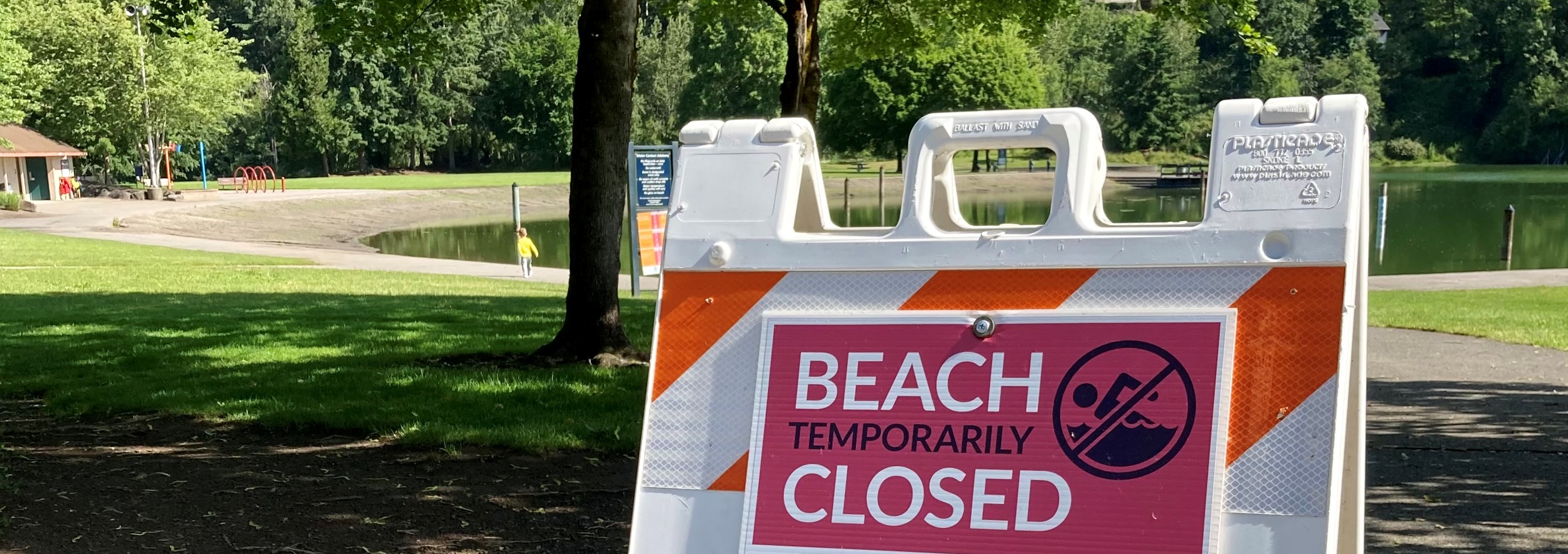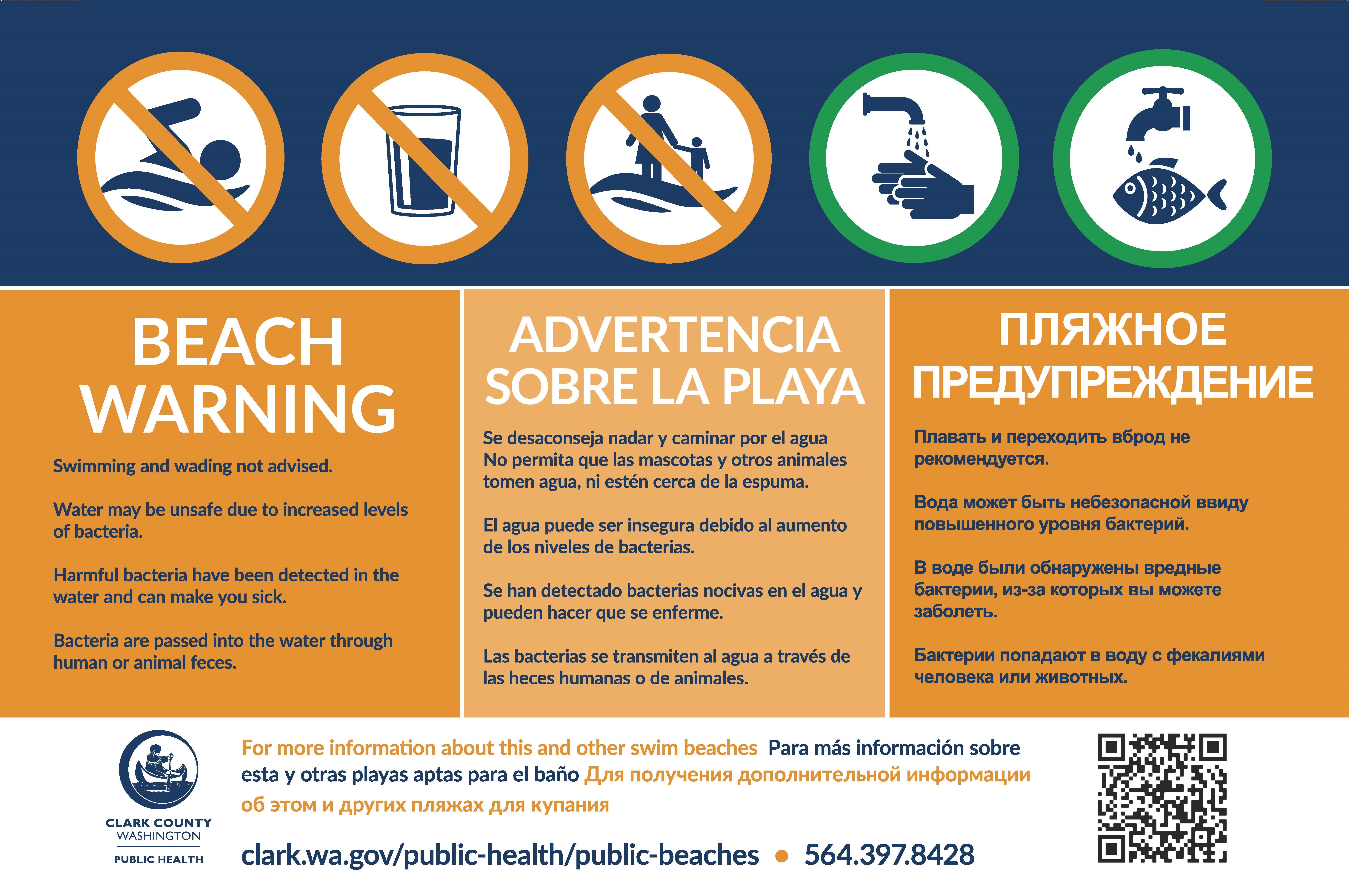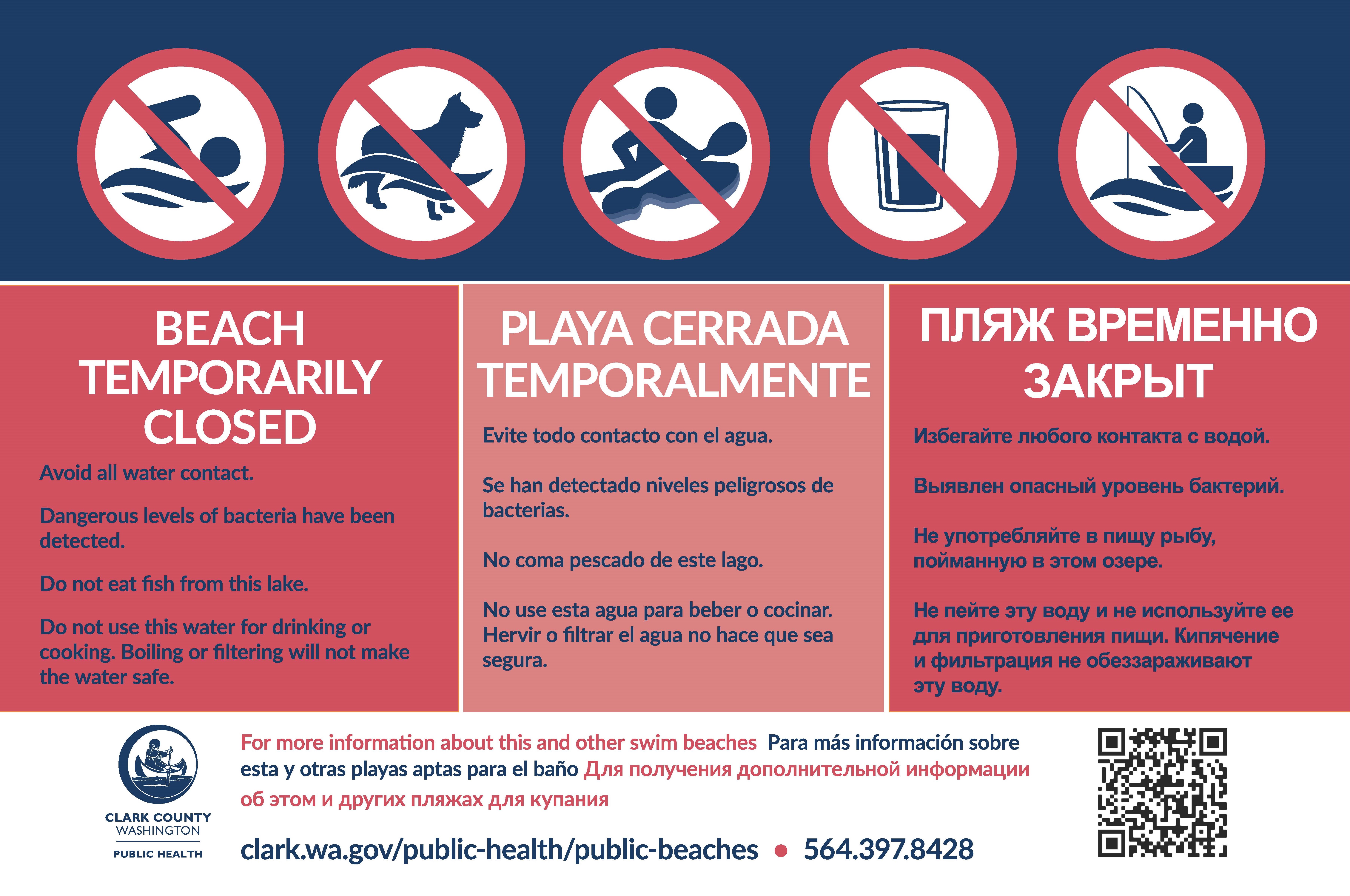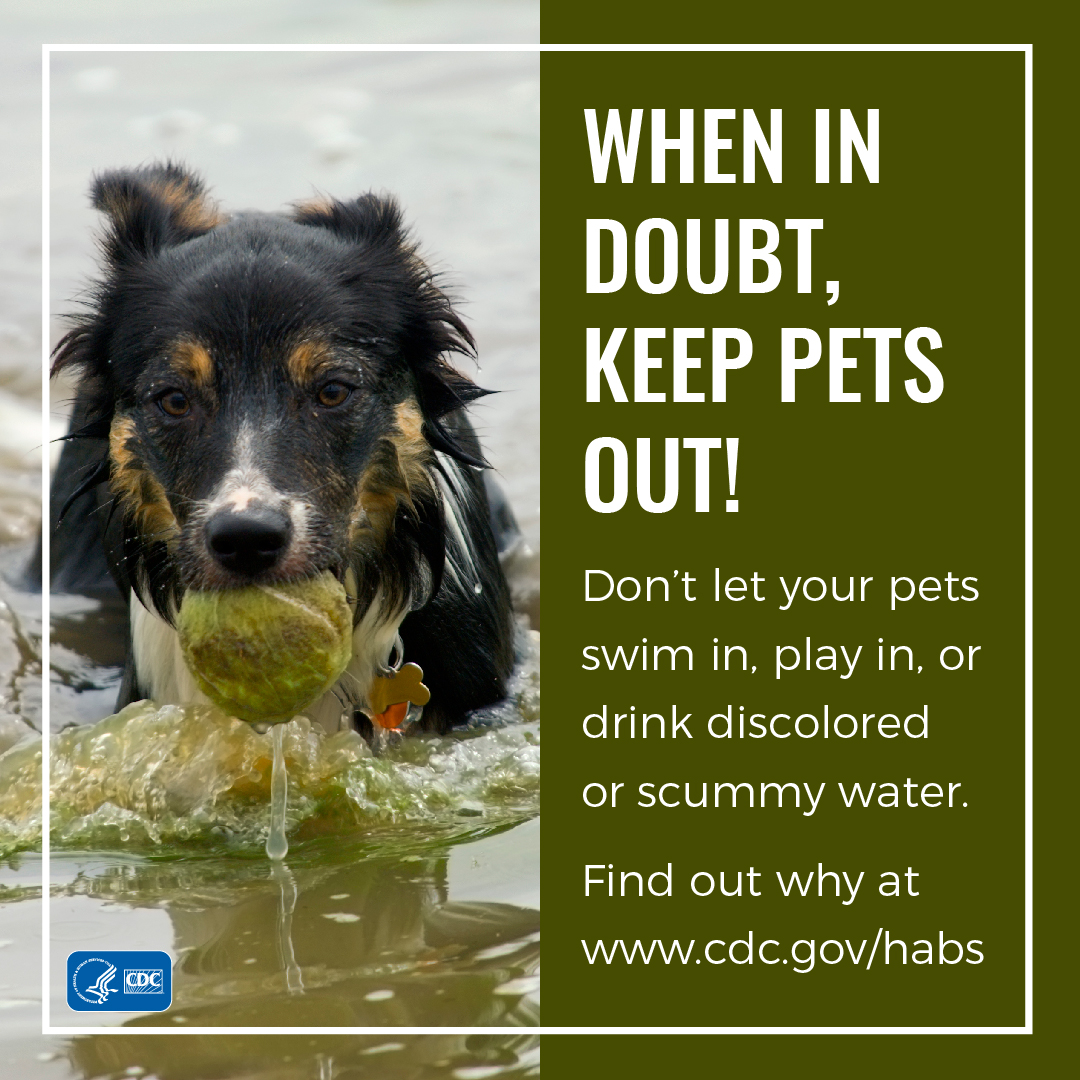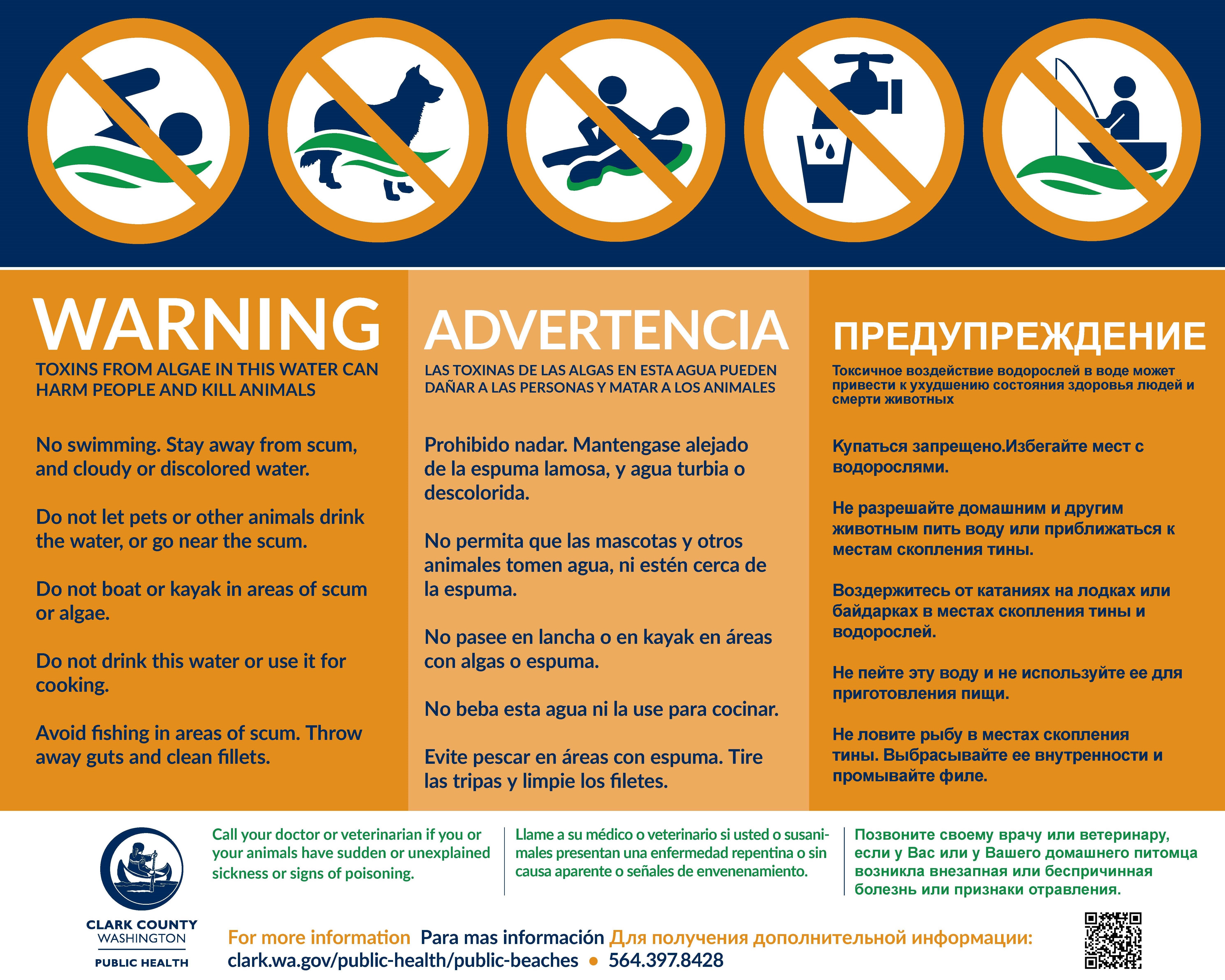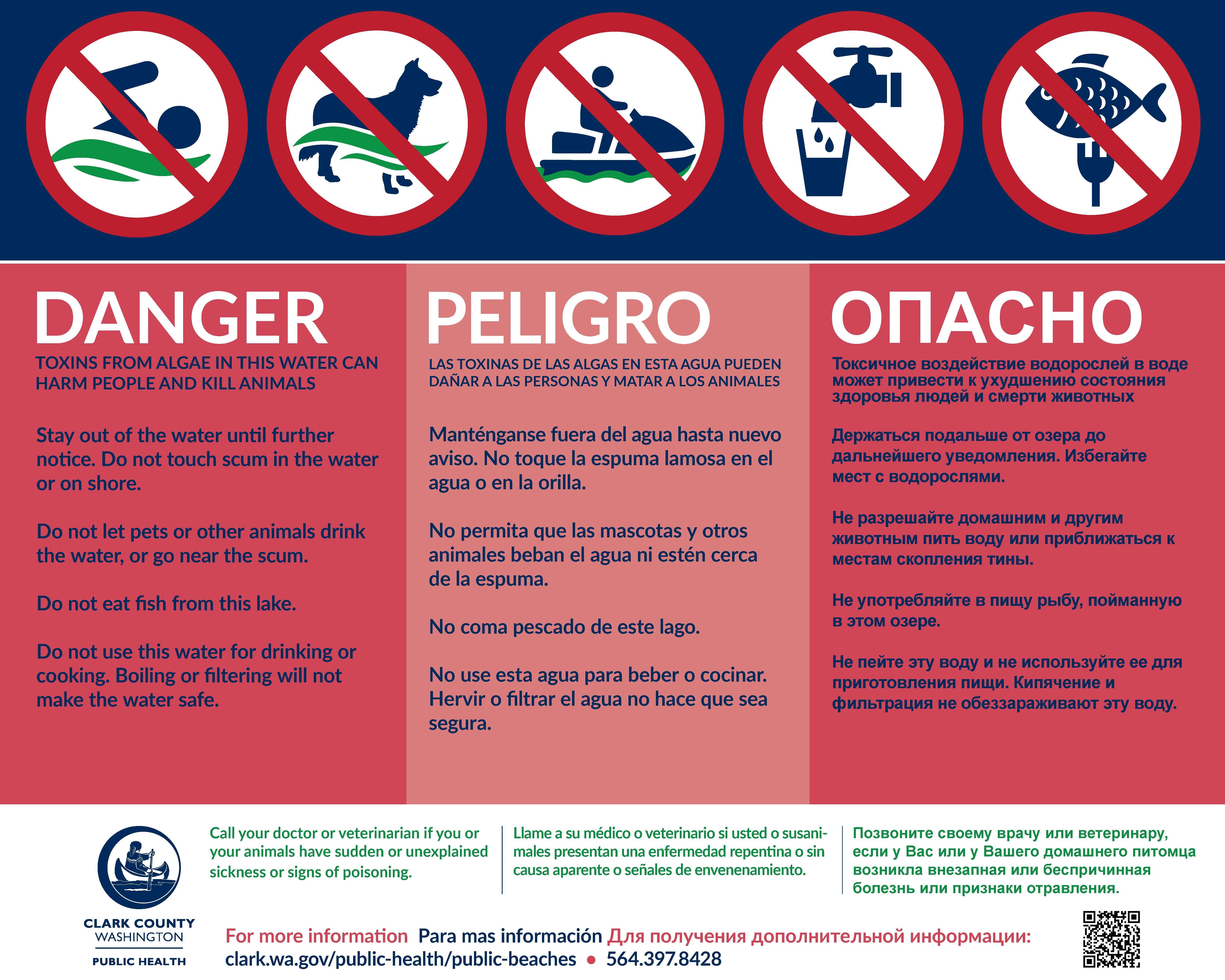Advisories are issued for designated swim beaches and other natural waterbodies that have potentially hazardous conditions such as high concentrations of bacteria or algal toxins in the water. The current advisory and reopening protocols (revised in 2020) are described below along with data from the current monitoring season.
Key Terms
Site Visit: Public Health staff visiting and/or sampling a lake location.
Samples Drawn: Water samples collected for further testing and analysis. Public Health will collect some water samples to identify a harmful algal bloom in addition to sending samples to be analyzed for toxicity.
Sent for Analysis: Samples drawn that are sent to an accredited lab to determine level of E. coli or cyanotoxins to inform an advisory decision.
Above Threshold: Counts number of samples where cyanotoxins or E. coli bacteria were above recreational guidance warranting an advisory.
Advisories: When a water sample is above recreational guidance, Public Health works with park and lake managers to issue advisories to provide water contact recommendations to the public. To find out specific water contact recommendations during advisories, check-out the information on our webpage below!
E.coli bacteria advisories
Public Health monitors three designated swim beaches including Vancouver Lake Regional Park, Battle Ground Lake State Park, and Klineline Pond every other week Memorial Day to Labor Day. We collect 5 to 6 water samples from different parts of the beach to determine the amount of E.coli bacteria present. Bacteria are measured as colony forming units (CFU), which is a count of the number of bacteria, per 100 mL of water (about half a cup of water). Want to know how E. coli (poop) ends up in our waterways and lakes? Check out our FAQ page for answers to more frequently asked questions.
If bacteria values are high, Public Health will review the monitoring data and other information about the beach and may recommend that park managers issue advisories. Public Health may recommend a closure if conditions provide a high risk of acute illness based on the Environmental Protections Agency’s (EPA) recommend Beach Action Value of no more than 235 cfu/100mL of E. coli in a single sample for a freshwater body.
For advisory posting and de-posting process, check-out our decision tree here.
Algal toxin advisories
When Public Health receives reports of a harmful algal bloom at a local waterbody, we investigate to confirm the presence and test for algal toxins weekly. If one or more algal toxins at a waterbody are above the following Washington Department of Health Recommended Guidance thresholds, Public Health will recommend issuing a WARNING or DANGER advisory.
- Microcystin: 8 µg/L
- Anatoxin-a: 1 µg/L
- Saxitoxin: 75 µg/L
- Cylindrospermopsin: 14 µg/L
To remove a danger advisory, algal toxins need to be below the state guidance thresholds for two consecutive weeks. If samples are not collected in two consecutive weeks, the two most recent samples may be used depending on specific lake conditions. Algal blooms can start producing toxins quickly and can persist after the bloom has dissipated. Public Health may recommend keeping a danger advisory in place if there is still a visible algal bloom, even if the toxin concentrations periodically drop below the threshold or it dissipates for short periods of time.
For advisory posting and de-posting process, check-out our decision tree here.
Have you seen our educational signs?
This educational sign will be posted at lakes in Clark County that regularly experience algae blooms. Signs are currently posted at various locations around Vancouver Lake, Lacamas Lake, Round Lake and Fallen Leaf Lake. Potentially hazardous conditions may be present during a bloom however safe recreation can still occur at these lakes. Please follow the guidance on these signs and be aware of the water before you get in. Remember, when in doubt, stay out!
If you are out at one of these lakes and see this sign posted, you can scan the QR code to view the current advisories for waterbodies and whether they are currently being monitored. Please note, Public Health samples waterbodies with a reported bloom weekly for cyanotoxins and will post advisories based on the lab results, typically three days after the samples were drawn. Want to know why sample results take several days? Check out our FAQ page for more answers to frequently asked questions.
If you are out and see discolored water, resembling green or blue paint, report those using our online public health concern portal and click here to find out how you can help prevent toxic algae.
